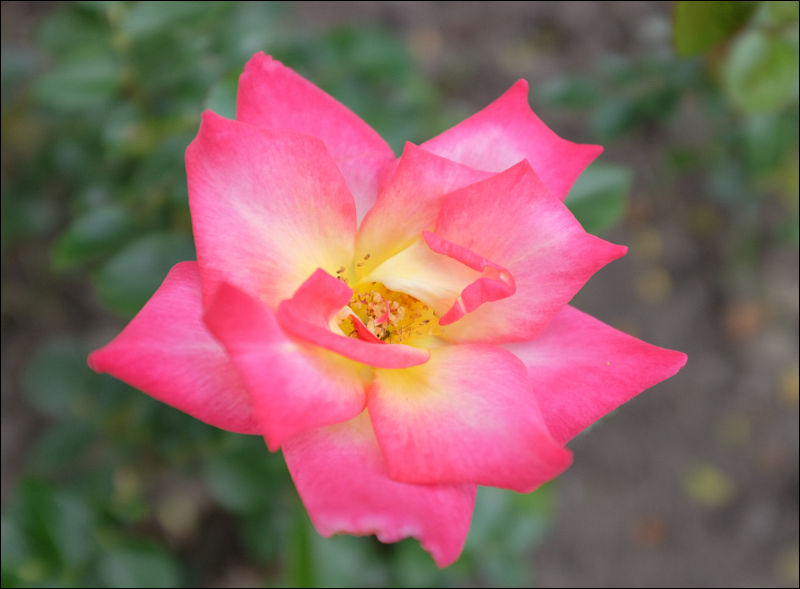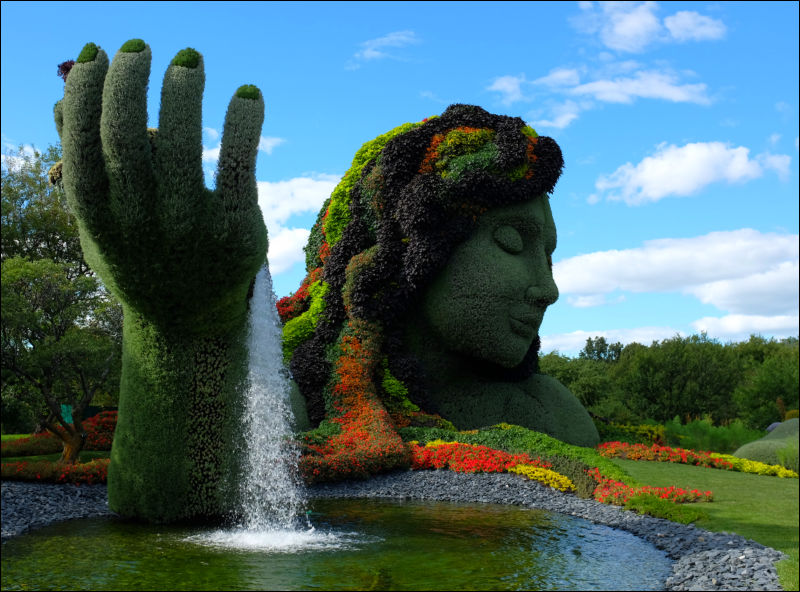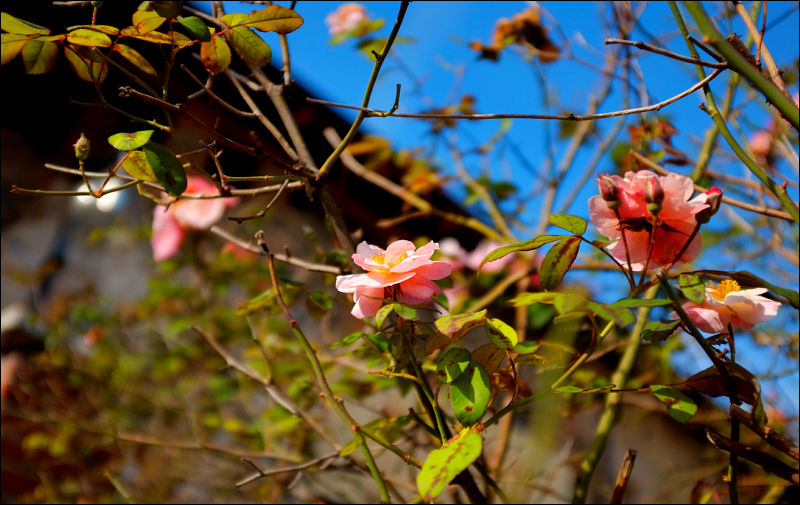
-
At first I thought X100S is a minor update. But it seems a major update. Not just body performance. Lens has been updated so that f/2.8~f/11 performance seems stellar. I've seen some really nice macro shots. But why the naming instead of X200?
Sigma DP lineup is complete with DP1, DP2, and DP3 series. DP1, DP1s, DP1x, and DP1 merrill have 28mm equivalent FOV. All DP2 models have 45mm FOV, and the newly released DP3 merrill has 75mm FOV.
My gut feeling is that Fuji is mimicking the naming. So X200 series might be 50mm FOV and X300 series 85mm FOV. Go Fuji!!!!
-
X100s has no image stabilization. It is the first Fuji X model that takes 14-bit RAW images.
-
List of improvements over X100
-
X100S' dev team's lead said the 'S' stands for second/special/super. "X100" term is iconic to Fuji's X lineups. The next version would be called X100T.
-
its strong picture quality and dense level of control make it a suitable companion for a pro photographer that doesn’t feel like toting their DSLR rig around all of the time
http://www.theverge.com/2013/4/22/4242928/fujifilm-x100s-review
-
Fuji has momentum, and it's not stopping. While the market for point-and-shoots has been dramatically eroded by smartphones, and APS-C SLRs are under pressure from ever more-capable EVF machines, Fuji has created a vibrant market of retro-yet-ultra-contemporary cameras -- like the X100s. These machines capture perfectly the contemporary ethos of Ihassle-free nstagram-style photography, yet do it in a fully professional package.
Work remains to be done on their control-set, but Fuji has made tremendous strides with this innovative line of cameras. I can't wait to see what they come up with next. In the meantime, let the new street and travel king be crowned!
-
The Fujifilm X100S is a great update of the X100 they released in 2011. With increased performance and image quality, a fantastic camera has been greatly improved. This is one of the leading cameras when it comes to Fuji's innovation and quality. It's still a rangefinder style camera with a fixed 35mm equivalent lens, designed specifically for enthusiasts who want a rangefinder-type model.
http://www.steves-digicams.com/camera-reviews/fujifilm/x100s/fujifilm-x100s-review.html
-
Video maxes out at 1920x1080p60, and footage that we shot showed plenty of detail and minimal artifacts.
Given the price of the X100S, it is difficult to draw comparisons. For the same bucks, you could easily get a camera that performs as well and accepts interchangeable lenses. But the compactness and the overall experience wouldn’t be the same.
http://www.popphoto.com/gear/2013/06/camera-test-fujifilm-x100s
-
The many buttons and dials make it easy to change settings in the field. At the same time, these many buttons and dials may seem intimidating to users looking to acquire their first digital camera and we see the X100s appealing to the experienced photographer rather than to beginners.
The lens is a fast F2.0, 23 mm fixed focal length lens (35 mm eqv. in full frame). This is a good focal length for reportage and street shooting, but with just this one focal length available (and a 28 mm (eqv.) add-on lens converter) the X100s doesn't match the versality of a super zoom or an interchangeable lens camera
Responsiveness is fast enough for most shooting and the image buffer is large enough for short bursts at 6 fps in JPG mode.
The movie quality is very good but there is no manual control available during recording.
http://www.pentaxforums.com/reviews/fuji-x100s-review/introduction.html
-
Review by DPReview
As we've seen with previous X-Trans-equipped cameras from Fujifilm, the X100S delivers excellent JPEG image quality. The 16MP X-Trans sensor is optimized for the lens, and sharpness is excellent between F2-11 (the edges look a little wishy-washy 'wide open' but central sharpness is superb), with diffraction taking the edge off at smaller apertures. Bokeh is a pleasant and edge-to-edge sharpness is very good indeed once the lens is stopped down to F5.6. We weren't able to definitively test the efficacy of the 'Lens Modulation Optimizer' but from our real-world shooting, we have no serious complaints about the performance of the X100S's 23mm F2 lens at all.
Technically speaking, the X100S's sensor may be considered virtually 'noiseless' to any practical extent until at least ISO800. Even above this setting, noise doesn't really start to seriously erode image quality until its very highest sensitivities, which is impressive stuff indeed. The X100S's highest ISO settings of 12,800 and 25,600 are JPEG only modes, so if you habitually shoot Raw or Raw+ JPEG you'll be unable to access them, but we've found that in a pinch, underexposing Raw shots taken at ISO 6400 and pushing levels up afterwards using raw conversion software can deliver usable results. That said, as we've pointed out elsewhere in this review, unless you need to fine-tune white balance after the fact, there's little real need to shoot Raw with the X100S - the JPEGs are excellent.
The only unequivocally weak area of the camera's performance is in video mode. Although it captures better footage than the X100, the X100S's lack of image stabilization, tinny microphone and tendency to generate psychedelic moiré combine to create an awkward, unfinished impression, enhanced by the fact that you have to enter the drive mode menu to even capture video in the first place.
-
The Fuji X100S is a interestingly capable digital camera. With its full manual-controls, including bulb exposure, manual-focus and custom white-balance, the Fuji X100S lets photographers be highly creative except for one crucial limitation: a fixed 23mm prime lens. This means that every photo from this digital camera shows exactly the same perspective.
The new X-Trans II CMOS sensor offers 25% more resolution, twice the maximum light sensitivity and incorporates Phase-Detect AF sensors.

Dynamic-range is superb, although one can easily notice that Fuji uses an entirely different approach. Maximum dynamic-range is achievable between 800 and 6400 where it is above that of most digital cameras.
The Fujinon 23mm F/2 lens is a superb achievement. It is perfectly sharp from F/2 except at the extreme corners of images. The corners sharpen nicely at each stop down from the maximum with the sweet-spot around F/5.6. There is no noticeable distortion or vignetting either.
The Fuji X100S produces superb image-quality, matching that of DSLRs and fixed-lens cameras which APS-C sensors. Noise levels are extremely low and fine-details are rendered well up to maximum standard ISO. The lack of an anti-alias filter gives it more crisp output than its predecessor and most digital cameras.

This camera does will in other aspect of image-quality too, with great dynamic-range, good exposure, pleasing color and generally accurate white-balance. The lens is exceptionally sharp with virtually no distortion or sign of vignetting.

 g34.jpg800 x 589 - 58K
g34.jpg800 x 589 - 58K
 g35.jpg800 x 592 - 118K
g35.jpg800 x 592 - 118K -

 fuji9.jpg800 x 531 - 111K
fuji9.jpg800 x 531 - 111K
 fuji8.jpg800 x 536 - 93K
fuji8.jpg800 x 536 - 93K -
X100S Firmware Update Ver.1.10
http://www.fujifilm.com/support/digital_cameras/software/firmware/x/x100s/index.html
Howdy, Stranger!
It looks like you're new here. If you want to get involved, click one of these buttons!
Categories
- Topics List23,998
- Blog5,725
- General and News1,360
- Hacks and Patches1,153
- ↳ Top Settings33
- ↳ Beginners256
- ↳ Archives402
- ↳ Hacks News and Development56
- Cameras2,367
- ↳ Panasonic995
- ↳ Canon118
- ↳ Sony156
- ↳ Nikon96
- ↳ Pentax and Samsung70
- ↳ Olympus and Fujifilm101
- ↳ Compacts and Camcorders300
- ↳ Smartphones for video97
- ↳ Pro Video Cameras191
- ↳ BlackMagic and other raw cameras116
- Skill1,960
- ↳ Business and distribution66
- ↳ Preparation, scripts and legal38
- ↳ Art149
- ↳ Import, Convert, Exporting291
- ↳ Editors191
- ↳ Effects and stunts115
- ↳ Color grading197
- ↳ Sound and Music280
- ↳ Lighting96
- ↳ Software and storage tips266
- Gear5,420
- ↳ Filters, Adapters, Matte boxes344
- ↳ Lenses1,582
- ↳ Follow focus and gears93
- ↳ Sound499
- ↳ Lighting gear314
- ↳ Camera movement230
- ↳ Gimbals and copters302
- ↳ Rigs and related stuff273
- ↳ Power solutions83
- ↳ Monitors and viewfinders340
- ↳ Tripods and fluid heads139
- ↳ Storage286
- ↳ Computers and studio gear560
- ↳ VR and 3D248
- Showcase1,859
- Marketplace2,834
- Offtopic1,320












